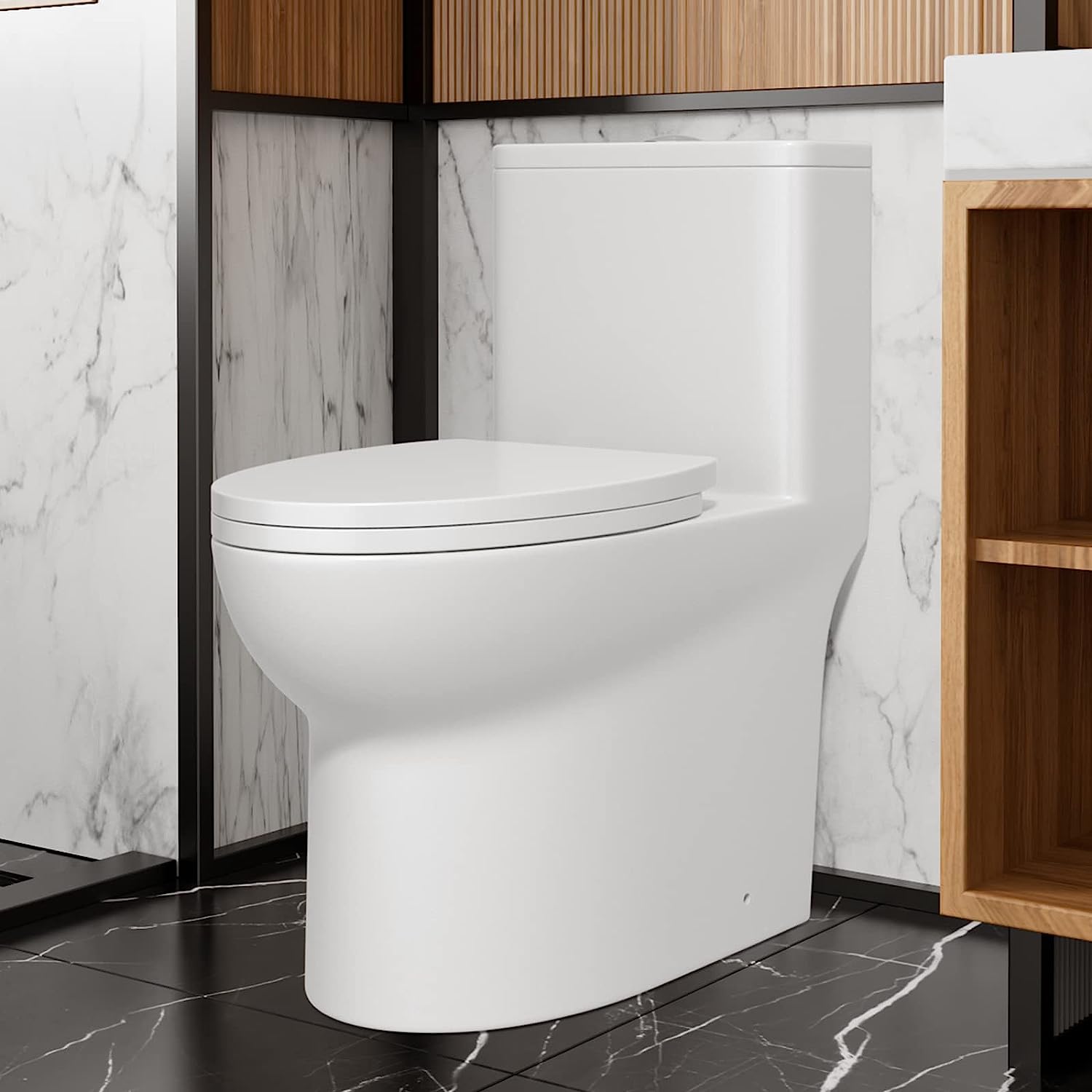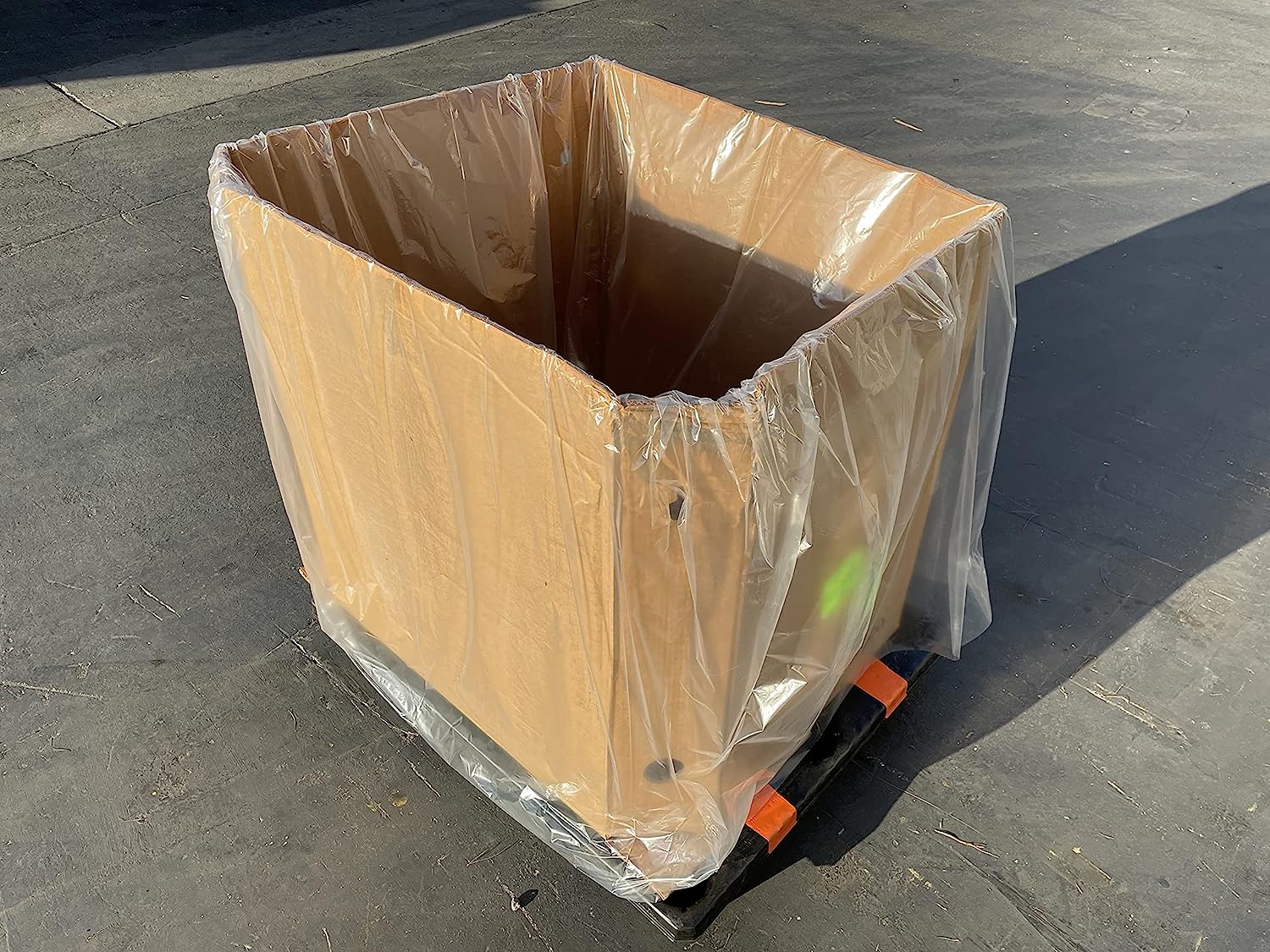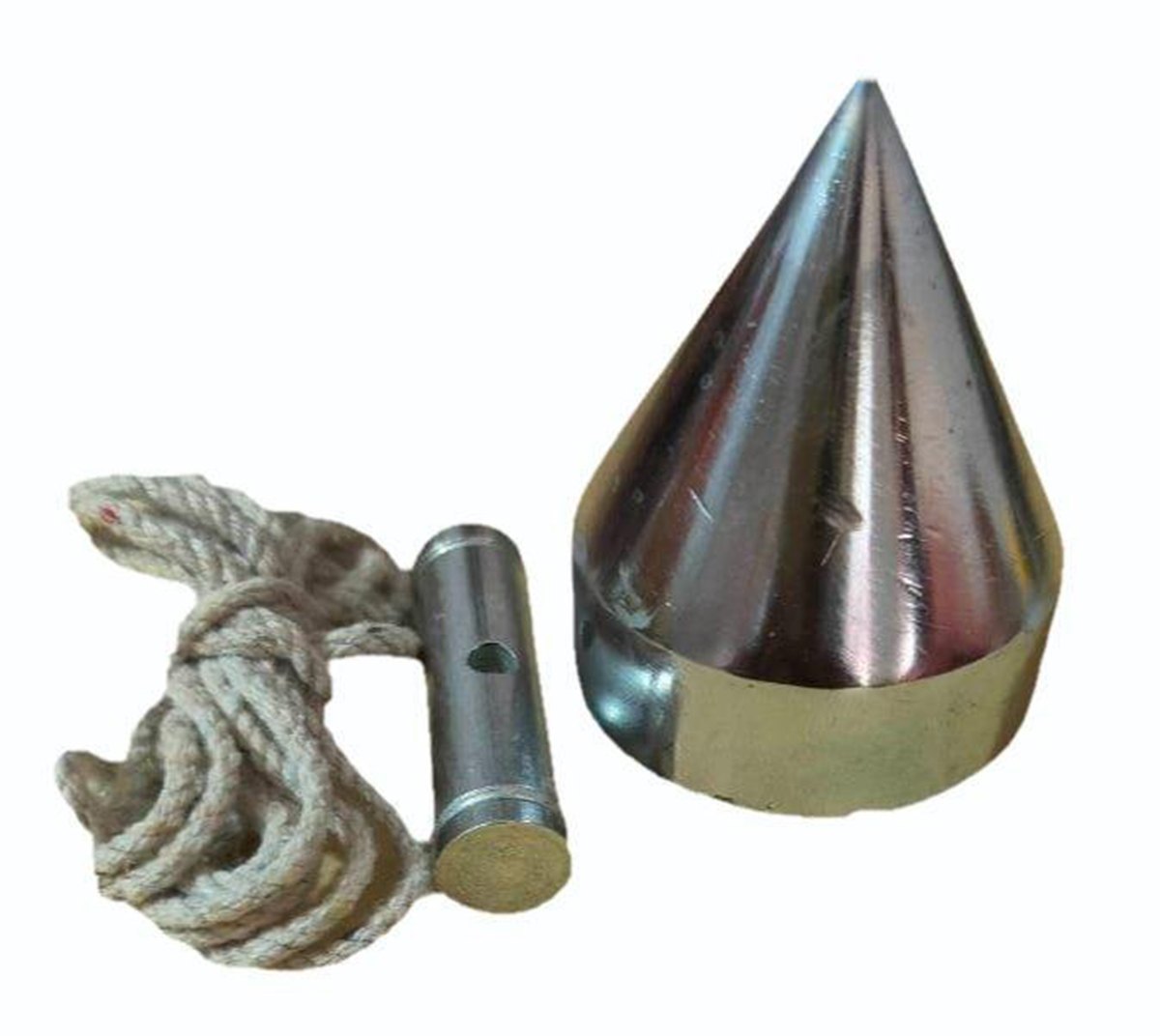

Articles
Why Is A Toilet Called A Head
Modified: December 6, 2023
Discover the origins behind the strange name for toilets, commonly referred to as "heads." Explore interesting articles on the subject.
(Many of the links in this article redirect to a specific reviewed product. Your purchase of these products through affiliate links helps to generate commission for Storables.com, at no extra cost. Learn more)
Introduction
The humble toilet, a ubiquitous fixture in modern bathrooms, is a marvel of engineering and sanitation. However, have you ever wondered why it is often referred to as a “head”? This seemingly peculiar term has a fascinating history and origin that goes beyond its basic function.
In this article, we will delve into the origins of the term “head” for a toilet and explore the various theories and factors that have contributed to its use over the years. From nautical references to military usage and the evolution of language, we will uncover the intriguing story behind this peculiar naming convention.
So, let’s dive in and unravel the mysterious origins of why a toilet is called a “head”!
Key Takeaways:
- The term “head” for a toilet originated from nautical references, stemming from the uppermost part of sailing ships. Its widespread adoption showcases the dynamic evolution of language and its integration into everyday vernacular.
- The term “head” has transcended its maritime and military origins to become a widely recognized and accepted term for a toilet. Its journey exemplifies the adaptability and interconnectedness of language across different domains and cultures.
Read more: Why Is The Toilet Called The John
Origins of the Term “Head”
The term “head” for a toilet can be traced back to its nautical origins. In sailing ships, the uppermost part of the vessel, where the crew’s living quarters were located, was known as the “head.” This area often included the toilet facilities, and sailors would refer to this specific space as the “head” as well.
The term “head” in this context has its roots in Old English. It comes from the word “heafod,” which means “top” or “chief” in the literal sense. The term “head” was used to describe the uppermost part of the ship because it was considered the most important area, where the captain and crew would gather and make decisions. Over time, the term “head” began to encompass the toilet facilities located in this area as well.
Another theory suggests that the term “head” originated from the use of the term “heading” in navigation. The term “heading” refers to the direction in which a ship is traveling. Sailors would use the term “heading” to indicate the direction in which they were pointing the ship while relieving themselves over the side. This practice eventually led to the use of the term “head” to refer to the toilet.
As ships navigated the seas, the term “head” for a toilet gradually made its way into common usage. Sailors who were accustomed to using this term while at sea would continue to refer to the toilet in the same manner even on land.
It’s important to note that the term “head” was initially used exclusively in maritime contexts. However, over time, it began to seep into general use, and the term became synonymous with a toilet, irrespective of its location on land or at sea.
Today, the term “head” is commonly used in marine and naval settings to refer to toilets onboard ships and submarines. However, its usage has also expanded to include land-based toilets, particularly in regions where nautical traditions have been historically significant.
Now that we have explored the origins of the term “head” for a toilet, let’s take a closer look at how its usage extended beyond the maritime realm and entered the military lexicon.
Nautical References
The nautical references associated with the term “head” for a toilet are deeply rooted in maritime traditions. Onboard sailing ships, the head or the topmost part of the vessel was where the crew’s living quarters were situated. This area often housed essential facilities, including the toilet.
Why did sailors use the term “head” to refer to the toilet specifically? One explanation is that the toilet facilities in sailing ships were typically located at the front or bow of the vessel. This location was chosen to take advantage of the forward motion of the ship and prevent unwanted odors from wafting back into the living quarters.
As sailors needed to go to the forward part of the ship to use the toilet, they would say they were going to the “head.” This term was used not only because of the toilet’s physical location but also because it was situated right under the “head” or upper deck of the ship.
Furthermore, the term “head” was commonly associated with the idea of leadership and decision-making on the ship. The captain, who held authority over the crew, would often be found in the head area. Sailors would thus refer to the toilet facilities located in this area as the “head.”
Over time, the term “head” became ingrained in naval jargon and spread beyond the confines of sailing ships. It found its way into usage aboard other types of vessels such as warships, submarines, and even modern-day cruise liners.
Today, the nautical references associated with the term “head” are still prevalent in marine and naval settings. Sailors, maritime enthusiasts, and those familiar with the seafaring lifestyle continue to use the term, creating a connection between the rich maritime heritage and the facilities onboard.
Now that we have explored the nautical references behind the term “head,” let’s move on to how the term has been adopted and used in the military context.
Use of the Term in the Military
The term “head” for a toilet has also found its way into military vocabulary, particularly within military camps, bases, and barracks. The influence of the military on the widespread adoption of this term stems from its close ties to maritime traditions and nautical references.
In military settings, the term “head” is often used to refer to the communal toilet facilities found in barracks or training facilities. This usage is reminiscent of the maritime origins of the term, where sailors would use the term to describe the toilet facilities located in the uppermost part of the ship.
One reason behind the military’s adoption of the term “head” could be the historical connection between the armed forces and maritime operations. Many military traditions and practices originate from naval operations, given the shared focus on discipline, order, and chain of command.
Additionally, the military lifestyle often involves intense training and deployments, which can result in the creation of unique terminologies and slang. Soldiers and personnel living and working in close quarters develop their own language to foster camaraderie and facilitate communication.
The term “head” fits perfectly within this context. Its connection to the maritime world adds a layer of tradition and familiarity, while its slightly informal tone reflects the close-knit atmosphere within military communities.
Furthermore, the use of the term “head” in military settings helps to create a shared understanding among personnel. When military personnel use the term, they know exactly what is being referred to, regardless of their location or environment.
It is worth noting that the term “head” itself does not hold a rank or position in the military hierarchy. Its usage is more focused on practicality and ease of communication, as opposed to conveying any specific military significance.
Overall, the incorporation of the term “head” in military contexts can be seen as an extension of its use in naval settings. It reflects the influence of maritime traditions in military practices, while also serving as a familiar and widely understood term within military communities.
Now that we have explored the use of the term “head” in the military, let’s shift our focus to the evolution of language and how it has contributed to the term’s popularity and adoption.
The term “head” for a toilet comes from the nautical term for the front part of a ship, where the toilet was traditionally located. This term has carried over into modern usage.
Evolution of Language
The evolution of language has played a significant role in the adoption and popularity of the term “head” for a toilet. Language is constantly evolving, and words and phrases can take on new meanings or expand their usage beyond their original context.
In the case of the term “head,” its origins in the maritime and military domains have influenced its broader acceptance and usage. As sailors and military personnel interacted with people outside of their respective fields, they introduced the term into general conversations, gradually familiarizing others with its meaning.
Language is also heavily influenced by cultural factors and regional variations. In regions with a strong maritime history or a significant military presence, the term “head” for a toilet gained popularity and became commonly used. This regional usage then spread and became more widely accepted, even in areas without a direct connection to the maritime or military world.
Furthermore, language is dynamic and adaptable. As people seek ways to express themselves informally and naturally, they tend to adopt slang or colloquial terms. The term “head” fits this category perfectly, offering a more casual and relatable way to refer to a toilet.
In the era of globalization, with increased travel and cultural exchange, language has become more interconnected. This interconnectedness has led to the sharing and borrowing of words and phrases across different languages and cultures, further contributing to the diffusion of the term “head.”
Moreover, the media plays a significant role in shaping language usage and popularizing certain terms. Films, television shows, books, and other forms of media often incorporate slang and colloquialisms, which can influence and reinforce the adoption of terms like “head” in everyday language.
In recent years, the widespread use of the internet and social media platforms has further accelerated the evolution of language. Online communities and discussions have the power to introduce and popularize terms rapidly, and the term “head” has benefitted from this phenomenon.
With all these factors at play, the term “head” has slowly and organically become a widely recognized alternative to the more traditional terms for a toilet. People from various backgrounds and regions can now understand and use the term comfortably, irrespective of their familiarity with maritime or military contexts.
Now that we have explored the evolution of language and its impact on the usage of the term “head,” let’s move on to discuss the modern usage and popularity of this unique naming convention.
Read more: Why Is It Called Silverware
Modern Usage and Popularity
In modern times, the term “head” for a toilet has gained widespread usage and popularity across various contexts and regions. It has become an accepted and understood term, not limited to maritime or military settings.
One of the reasons for the continued popularity of the term “head” is its simplicity and ease of understanding. Unlike more technical or formal terms, “head” is straightforward and universally recognizable. It has become a part of everyday language, making conversations about toilets more casual and relatable.
Additionally, the term “head” has gained popularity through its integration into popular culture. It is common to hear the term used in movies, TV shows, and books, which further solidifies its place in modern language. Its frequent appearance in popular media contributes to the familiarity and acceptance of the term among a wide range of individuals.
Moreover, the internet and social media have played a significant role in elevating the term “head” to the mainstream. Online forums, social networking sites, and meme culture have embraced the term and helped to spread its usage. Memes and jokes centered around the term have made it more memorable and further embedded it into internet slang.
Furthermore, the informal nature of the term “head” aligns with the current trend of using more casual and conversational language. There is a shift towards using terms that are relatable and unpretentious, and “head” fits well within this linguistic landscape.
It is worth noting that while the term “head” is widely accepted and understood, there may still be regional variations or personal preferences for alternative terms. However, the familiarity and recognition of “head” make it a convenient and universally understood option in many situations.
The modern usage and popularity of the term “head” further demonstrate the versatility and adaptability of language. Its journey from nautical origins to military usage and eventual incorporation into everyday language is a testament to the dynamism of language and its ability to evolve and resonate with different communities.
So, whether you’re aboard a ship, in a military barracks, or just chatting with friends, don’t be surprised if you hear or use the term “head” to refer to the toilet! It has become a quirky and enduring linguistic phenomenon in our modern world.
Now that we have explored the modern usage and popularity of the term “head,” let’s summarize our findings and conclude our exploration of this peculiar naming convention.
Conclusion
The term “head” for a toilet may seem puzzling at first, but its origins and evolution reveal a fascinating history. Stemming from the maritime world, where the uppermost part of a ship was known as the “head,” the term found its way into naval jargon and eventually extended to refer to the toilet facilities located in that area.
As sailors and military personnel interacted with the wider population, the term “head” became more widely recognized and adopted in everyday language. Its simplicity, cultural influence, and integration into popular media further propelled its popularity and usage.
The term “head” has become a part of modern vernacular, transcending its original nautical and military contexts. Its widespread acceptance and understanding showcase the adaptability and evolution of language, as well as the influence of popular culture and the internet.
Today, the term “head” is commonly used to refer to toilets in various settings, from ships and military camps to everyday conversations. It has become a casual, relatable, and widely recognized alternative to more traditional terms.
The journey of the term “head” exemplifies how language evolves over time, absorbing influences from different domains and adapting to the needs and preferences of its speakers. It is a reminder of the dynamic nature of language and the unique ways in which words and phrases can transform and persist through time.
So, the next time you hear or use the term “head” to refer to a toilet, you can appreciate the rich history and linguistic journey behind this seemingly peculiar naming convention. It is a testament to the interconnectedness of language and the fascinating stories hidden within our everyday words.
Now, you have gained a deeper understanding of why a toilet is called a “head.” So, go forth and share this newfound knowledge with others, celebrating the colorful and ever-evolving nature of language!
Frequently Asked Questions about Why Is A Toilet Called A Head
Was this page helpful?
At Storables.com, we guarantee accurate and reliable information. Our content, validated by Expert Board Contributors, is crafted following stringent Editorial Policies. We're committed to providing you with well-researched, expert-backed insights for all your informational needs.















0 thoughts on “Why Is A Toilet Called A Head”